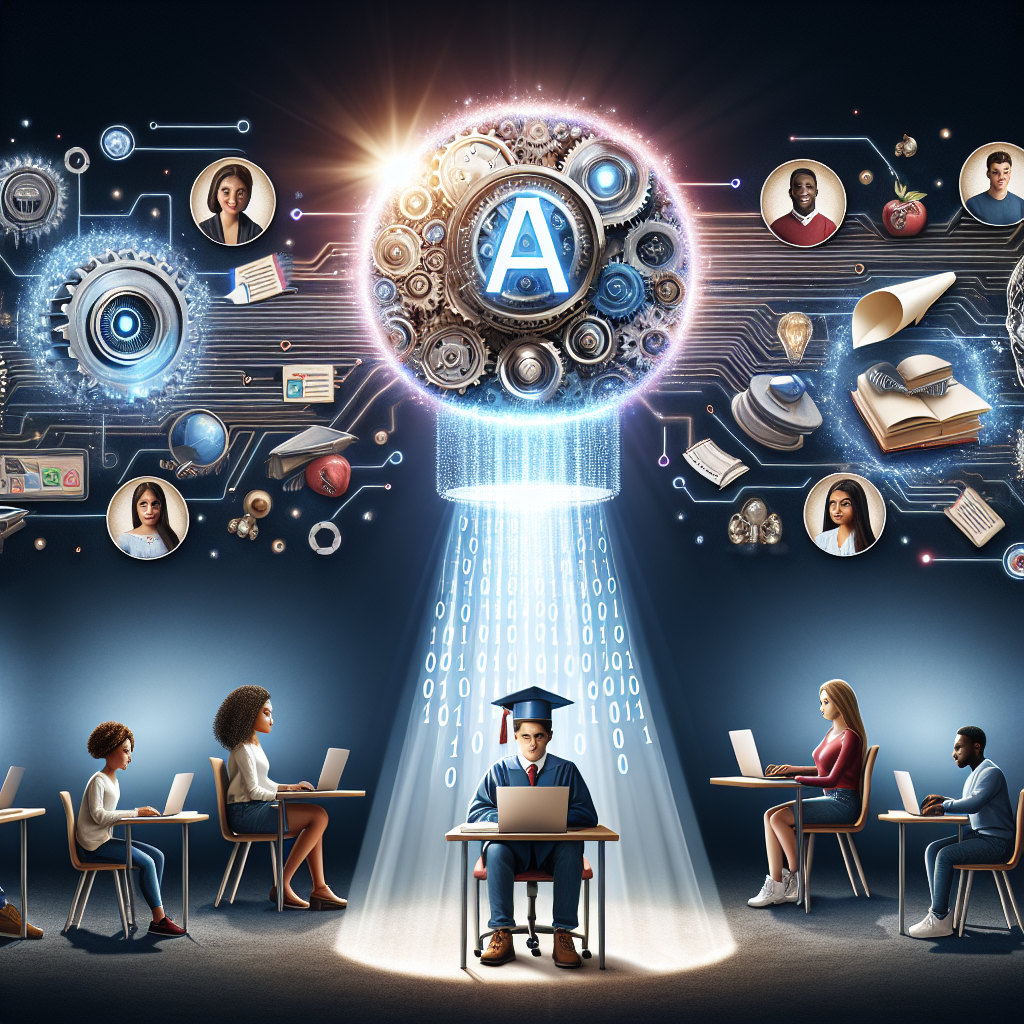In recent years, artificial intelligence (AI) has been making significant strides in various industries, including education. One area where AI is having a profound impact is on student retention and graduation rates. By using AI-powered tools and systems, institutions can better identify at-risk students, provide personalized support, and ultimately improve student outcomes. In this article, we will explore the ways in which AI is shaping the landscape of student retention and graduation rates, as well as address some common questions about the topic.
AI and Student Retention
Student retention refers to the ability of an institution to keep students enrolled and on track to graduate. Retention rates are a key indicator of an institution’s success in supporting student success. AI is revolutionizing the way institutions approach student retention by leveraging data analytics and machine learning algorithms to identify students who may be at risk of dropping out.
One of the primary ways in which AI is being used to improve student retention is through predictive analytics. By analyzing vast amounts of student data, AI can identify patterns and trends that indicate a student may be struggling academically, socially, or financially. For example, AI algorithms can analyze a student’s attendance records, grades, engagement with online resources, and even social media activity to determine if they are at risk of dropping out.
Once at-risk students have been identified, institutions can use AI-powered systems to provide personalized support and interventions. For example, AI chatbots can be used to provide students with timely and relevant information, resources, and support. These chatbots can also be programmed to reach out to students who have missed classes or assignments, offering assistance and encouragement to help them stay on track.
AI can also be used to improve the overall student experience, thereby increasing retention rates. For example, AI-powered platforms can help students navigate course registration, find resources on campus, and connect with academic advisors. By streamlining these processes and providing students with the support they need, institutions can create a more positive and engaging learning environment that encourages students to stay enrolled and ultimately graduate.
AI and Graduation Rates
Graduation rates are another key metric that institutions use to measure student success. AI is playing a crucial role in improving graduation rates by helping institutions identify barriers to completion and providing targeted interventions to help students overcome these obstacles.
One way in which AI is being used to improve graduation rates is through early warning systems. These systems use predictive analytics to identify students who are at risk of not graduating on time. By analyzing various data points, such as course completion rates, credit accumulation, and GPA trends, AI can identify students who may be falling behind and provide targeted interventions to help them get back on track.
AI can also be used to personalize the learning experience for students, thereby increasing their likelihood of graduating. For example, AI-powered adaptive learning platforms can tailor course materials and assignments to meet the individual needs and learning styles of students. By providing personalized feedback and support, these platforms can help students stay engaged and motivated to complete their degree.
Additionally, AI can help institutions track and analyze student progress throughout their academic journey, allowing them to identify trends and patterns that may impact graduation rates. For example, AI algorithms can analyze student performance data to determine which factors are most predictive of student success. This information can then be used to develop targeted interventions and strategies to improve graduation rates.
FAQs
Q: How does AI improve student retention and graduation rates?
A: AI improves student retention and graduation rates by using predictive analytics to identify at-risk students, providing personalized support and interventions, and creating a more engaging learning environment that encourages students to stay enrolled and graduate on time.
Q: Are there any ethical concerns associated with using AI in education?
A: Yes, there are ethical concerns associated with using AI in education, such as privacy issues, bias in algorithms, and the potential for misuse of student data. Institutions must be transparent about how AI is being used and ensure that students’ rights and privacy are protected.
Q: How can institutions implement AI to improve student retention and graduation rates?
A: Institutions can implement AI to improve student retention and graduation rates by investing in AI-powered tools and systems, training staff on how to use these tools effectively, and continuously evaluating and refining their AI strategies to ensure they are having a positive impact on student outcomes.
Q: What are some examples of AI-powered tools that can improve student retention and graduation rates?
A: Some examples of AI-powered tools that can improve student retention and graduation rates include predictive analytics systems, AI chatbots, adaptive learning platforms, and early warning systems. These tools can help institutions identify at-risk students, provide personalized support, and track student progress throughout their academic journey.
In conclusion, AI is revolutionizing the way institutions approach student retention and graduation rates by leveraging data analytics and machine learning algorithms to identify at-risk students, provide personalized support, and create a more engaging learning environment. By harnessing the power of AI, institutions can improve student outcomes and ultimately help more students successfully complete their degrees.

